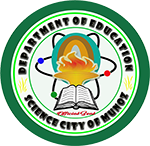By: Ann Christian A. Francisco
Since its implementation in 2016, it is high time to visit the K-12 curriculum. The driving factors for the change in the Philippine education system were, to name a few: to be at par with the other Asian countries who have been following the said curriculum; to prepare the graduates for higher education or degree; to equip the completers with the knowledge and skills necessary to become competitive in this dynamic and demanding world even without a college degree; and to teach the enrollees how to establish their own businesses, thereby avoiding being tied up in an employment company. With a very promising vision, the change positively pictures a developed and progressive Philippines. As the former president Aquino III said, “Sa K to 12, tiwalatayongmabibigyang-lakassi Juan dela Cruz upangmapaunlad- hindilamangangkanyangsarili at pamilyakundimagingangbuongbansa( Official Gazette, 2013).”
During its onset, a lot of preparations had to be done. Teachers from different levels had to attend seminars and trainings so they could have enough understanding of the implementation and curriculum of the program. School buildings had to be built, personnel items had to be created, and revisions in the curriculum had to be done. There were both positive and negative effects that can be observed. For the teachers in high schools, these effects were evident in different areas. For instance, because of the added items that needed to be filled, there was an increase in the number of employed teachers. On the part of the student-graduates, they are more mature and ready to face the realities of the world. However, there are also negative consequences. Even if infrastructure projects were carried out, classrooms and chairs in the public schools were lacking. Textbooks were also not yet ready and printed so teachers were in the dark for the materials to be used. For the teachers, they had to be trained within a very short period of time so they can operate well in the new education system.
Here in the Division of Science City of Muñoz, we underwent an 18-day regional training in order for us to be oriented and guided in the opening of senior high schools and its operations. We were introduced to the new courses that had to be taught, requirements that had to be met and policies that had to be executed. In addition, the focus of the curriculum, specifically the 21st century skills that have to be developed in the learners, were emphasized. We were reminded that senior high is a gateway of the graduates to be potential earners even without going to college to obtain a degree. Being inevitable and beyond our control, we had no better choice but to adapt, and adapt fast.
As flexible as we are, we managed to survive the two academic years that passed. We are now on the third year of operation and I can say that we are getting better as years go by. Changes and challenges during the operation of the program have arisen but we still managed to meet them head on and overcome all. We were also able to happily witness a graduation ceremony of the first batch of graduates of senior high school. Textbooks that are aligned to the curriculum were also made available. However, there is always room for improvement and there are means that can be adopted so that the operation will be smoother. I would like to present three recommendations that I hope may be addressed.
The first recommendation is to continuously and regularly re-calibrate or train senior high teachers. This way, they will be able to be updated, equipped and further qualified to become more competent teachers of senior high schoolers. The task can be very daunting and if teachers are not continuously developed, then the product, which is the students, may also not be the ones that the country needs. Some teachers that were hired came from higher education institutions and were not education graduates. The administration should make sure that these teachers are enrolled in education courses that focus on theories and methods of teaching. Also, to add to their qualification, they should apply for certifications and/or licensing. Finally, enrolling in graduate courses and attending conferences should be highly encouraged.
The second recommendation is for the government to provide quality learning environment and learning facilities. Schools have to be safe from any kind of harm, both for the benefits of the teachers and the students. Schools should be strategically located in such a way that they are not physically detached from society yet not too close to be near temptations and distractions to learning. Within the school compound, there should be enough number of classrooms so that students do not cramped in small spaces where they can barely breathe and move comfortably. There should be enough number of textbooks, laboratories, audio-visual materials, and other print or non-print reference materials.
Finally, continuous evaluation of the curriculum guide should be done. Demands are constantly changing so what we offer to the students should also address these changing demands. For example, there was a great demand for English proficiency because of the call centers in the country. Because of this, schools focused on the development and improvement of the English speaking skills of Filipinos. However, Filipino call center agents are no longer as in demand as before. Call centers employ many Indians and other Asian nationalities, aside from Filipinos. This lessens job opportunities for us so we need to upgrade and/or diversify. We might want to focus on technological advancements and technological inventions so we can remain competitive in the global market.
The above-mentioned suggestions are few and do not cover everything we need in education. They are vital in staying strong and responsive as a nation in this ever-changing world.
